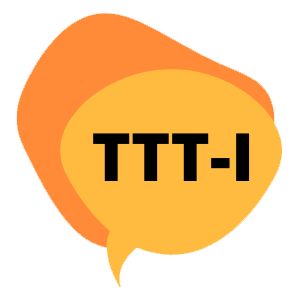14 Jun 3.1 Synchronous Communication Tools
Synchronous communication can be a challenge to plan due to different schedules and time zones; however, real time communication can decrease feelings of isolation and increase a sense of community in the cybercafé.
Below are the most common synchronous tools utilized in online education. The appropriate and effective uses of each tool will be discussed, along with its advantages and disadvantages.
3.1.1 Chat
Chat is a form of synchronous text-based communication allowing students and the instructor to meet in “real-time” for conversation, discussion forums, question and answer sessions, or virtual office hours.
Advantages: Chat offers immediate interaction and feedback. The immediate connection and ability to collaborate with pees can help develop a sense of community. Most chat can be conducted over a slow internet connection or mobile apps using low data volume
Disadvantages: Chat requires all participants to be good typists. Once a slow typist has responded, the conversation may have progressed to a different concept. If the chat group has too many participants, the “conversation can become difficult to follow and disjointed” A group of more than five to seven participants is too large.
Uses: Use chat when other forms of asynchronous communication are too slow. Common uses for chat include (Horton, 2006, p. 430):
- Real-time question and answer sessions
- Brainstorming, troubleshooting, and problem-solving sessions
- Interviews of experts
- Study groups, team meetings, tutoring sessions and private meetings
3.1.2 Skype (or Zoom)
Skype enables one to make voice calls, video calls, send instant messages or chat, and send SMS (Short Message Service) text messages. Skype basically turns the computer into a telephone using a voice over Internet protocol (VoIP) technology allowing people to communicate from anywhere in the world. A contact list is created when Skype users accept contact requests from other Skype users.
Advantages: Skype is a free online collaborative tool. “Skype is secure, providing encryption of all communications and engaging anti-virus software to protect the communications”.
Disadvantages: Calls to land lines or cell phones are not free. Skype requires a high speed internet connection. Slower connections may drop the call or provide intermittent service. Devices that operate on the same frequency may interfere with a Skype connection such as Bluetooth, routers, cordless phones, and microwave ovens. Also, Skype can be a bandwidth hog.
Uses: Skype is very useful when verbal interaction is required between participants. Activities for Skype include hosting virtual office hours and one-on-one tutoring. Participants can Skype with each other sharing their experiences and collaborate in project work. Teachers can instant message to colleagues and students. It is important to provide participants with technical requirements and instructions on how to download and setup a Skype account.
3.1.3 Social Networking Sites (i.e Facebook)
“Over the past years social networking sites (SNSs) have become one of the most prominent genres of social software, popularized by Facebook that now each boast hundreds of millions of users”. SNSs are individually customized personal online spaces. Users set up profiles to represent themselves online. Profiles contain personal information such as hometown, hobbies, interests, political and social affiliations, photographs, and videos. This information is shared with preferred ‘friends’ that have been granted access. Facebook was originally created for use by college students to connect and create university communities (Mason et al.)
Advantages: SNS’s provide a creative outlet for participants. Through profiles, participants can display their audio, video, and photographic works demonstrating “artistic presentation”. SNS’s can also give a sense of belonging by allowing the the participation in an online community. Access to SNS’s is free, the sites are easy to maneuver within, and a written record of communications is stored. Many SNS’s connections lead to face-to-face connections and real friendships. Some educators argue SNS’s have the power and potential to fundamentally alter the educational system by actively engaging and motivating the learner as opposed to the traditional passive learner as only an observer.
Disadvantages: Some teachers have viewed peers in a negative light with negative consequences after viewing their profile in a SNS’s. Also, SNS’s offer hundreds of games consuming participants interest and time.
Uses: In a study of the ‘wall’ activity within Facebook of 909 students, found the following education-related interactions from students:
- recounting and reflecting on the university experience;
- exchange of practical information;
- exchange of academic information;
- displays of supplication and/or disengagement;
- exchanges of humor and nonsense.
